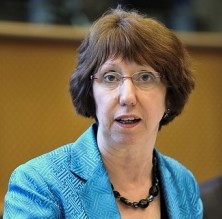
The treachery of strategies: a call for true EU strategic partnerships

In
In September 2010, the European Council discussed for the first time the European Union’s (EU) strategic partnerships, a foreign policy concept that was until then unknown to most people – including EU officials. This discussion was certainly needed in these times of geopolitical upheaval. The global shift of power from the Atlantic to the Pacific forces the EU and its Member States to fundamentally rethink their foreign policy with a strong focus on great and emerging powers; otherwise the EU is at risk of falling into global irrelevance.
The 2009 Copenhagen climate conference was just a foretaste of what global irrelevance could mean. The recent events in the Arab world have proved again that Europe is not at ease with contemporary challenges, including in its own neighbourhood. To cope with the coming multipolar world, the EU should invest time and energy in its relationships with great and emerging powers, i.e. in the so-called strategic partnerships, because the more the world becomes globalised and interconnected, the more the EU will be confronted with them – a confrontation that can lead either to cooperation or competition. Given that all international actors need one another if they are to cope with issues as crucial as climate change, nuclear proliferation and sustainable development, cooperation should be privileged over competition. Current events in the Arab world – as important as they are – should not distract the EU from its vital long-term strategic interest: secure a relevant status in the coming multipolar environment dominated by great powers.
On the basis of a review of EU documents, official and informal, as well as a certain amount of interviews with European officials, this paper concludes that the EU has today, in 2011, ten strategic partnerships with third countries: Brazil, Canada, China, India, Japan, Mexico, Russia, South Africa, South Korea and the United States. However, it is not entirely clear what is the exact reasoning behind this list. Some countries (e.g. the US) are considered to be natural partners of the EU, whereas others (e.g. China and Russia) are considered simply to be too big to ignore. As for the other countries on the list, the strategic rationale is far less evident. Their inclusion sometimes seems to be more the result of political and institutional games than of a true strategic reflection, hence leading to an “accidental” list of strategic partners. The objectives that the EU is supposed to pursue globally through its strategic partnerships are left entirely undefined. What are the EU’s global interests and priorities? How can these interests and priorities be pursued? What is the role of the strategic partners (cooperation or competition) in the pursuit of these interests and priorities? The 2003 European Security Strategy remains mute on these fundamental questions, as it says more about how to do things than about what exactly to do. Strategic partnerships thus unfold as instruments empty of meaning and substance, with no clearly defined strategic direction.
Strategic partnerships are only strategic in name, for now. A historical overview of documents and debates shows the total absence of strategic rationale behind the elaboration of strategic partnerships since the very beginning, with no definition of the concept or of its fundamental objectives, and an ad hoc selection of partners. This process of a-strategic thinking led to a repetition of past failures as the EU is now facing similar problems as it was ten years ago with the Common Strategies, from which the partnerships derived, namely the difficulty to turn rhetoric into concrete policies of strategic value vis-à-vis our partners. A set of interviews with EU officials and European diplomats confirmed that strategic partnerships are to this day empty of any substance. This paper demonstrates that strategic partnerships are not so strategic when looked at up-close for a variety of reasons, including that 1) not every partner is equally strategic; 2) the EU is not cooperating with its partners on most truly strategic issues; 3) the strategic partnership has no structural or institutional impact on the relationship; 4) or, finally, the EU itself is simply not considered as a strategic partner in many cases. This paper concludes that the recent revival of debates on strategic partnerships is a positive step forward and that a strict implementation of the important conclusions of the 2010 September European Council is now awaited.
Overall, this paper recommends reflecting on the EU’s global interests and priorities in search of the EU’s grand strategy. True strategic partnerships, as this paper brands them, could then be regarded as (sub-)strategies of the EU vis-à-vis great and emerging powers. In addition to this general recommendation, this paper makes several recommendations for the EU and its Member States to turn the existing strategic partnerships into true strategic partnerships: Review the EU’s institutional set-up, in line with the strategic nature of the partnerships, e.g. by establishing a cell dedicated to the strategic partnerships within the EEAS, or by developing the EU delegations in terms of size and composition to reflect the strategic character of the relationship. Review the EU’s internal arrangements, notably ensuring a greater coordination between the EU and the Member States vis-à-vis strategic partners. Review the bilateral arrangements between the EU and its strategic partners in order to acknowledge the strategic importance of the relationship, e.g. by establishing comprehensive and effective strategic dialogues as well as sectoral dialogues on security and defence, or by developing a culture of cooperation on strategic issues. Review the multilateral arrangements, according to the EU’s preference for effective multilateralism, e.g. by boosting coordination and conflict mediation mechanisms within multilateral forums between the EU and its strategic partners.
Egmont Paper 45, Apr. 2011.
(Photo credit: EEAS)